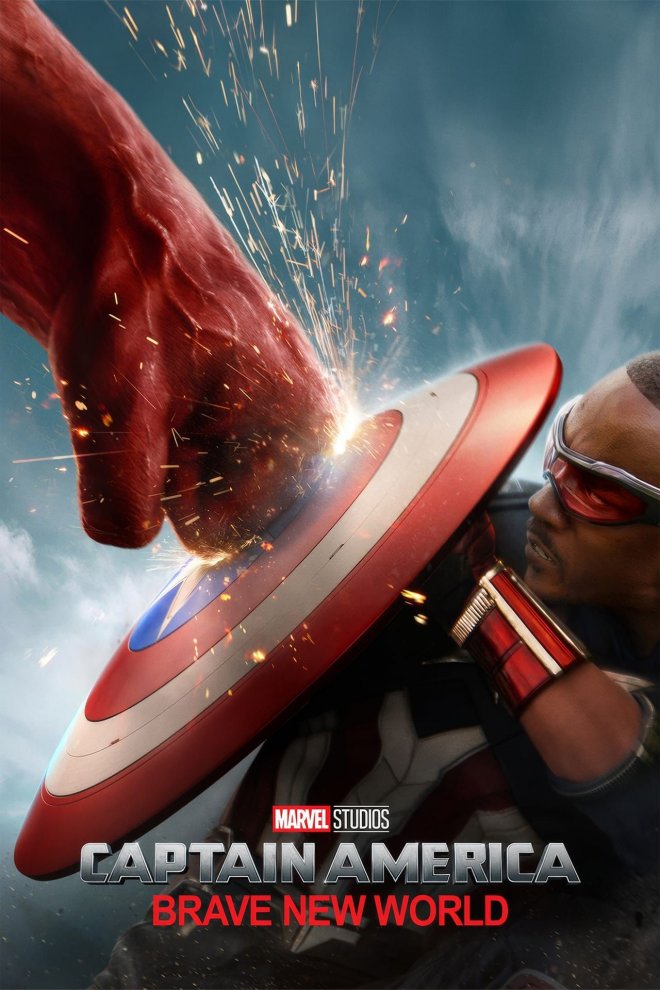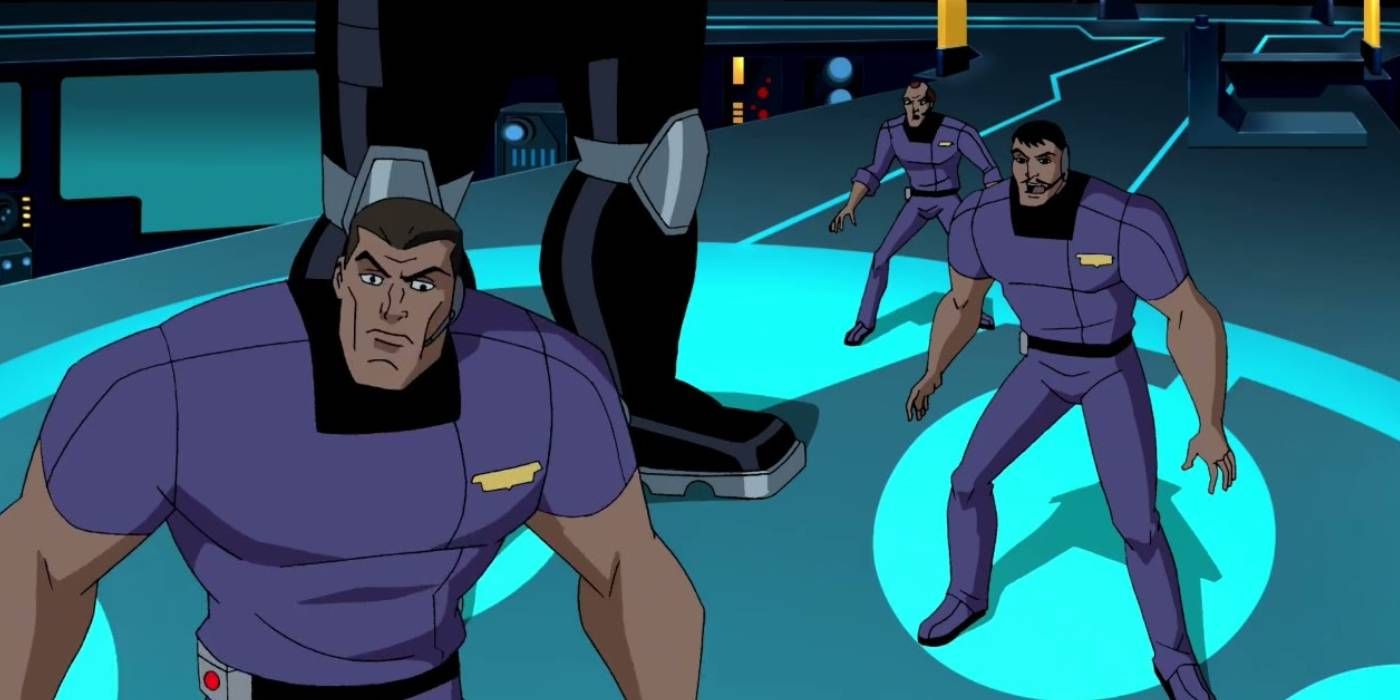All 43 X-Men: The Animated Series Villains, Ranked
X-Men: The Animated Series introduced audiences to a diverse array of villains, each contributing uniquely to the show"s dynamic storytelling with differing results. X-Men: TAS brought Marvel’s mutants to life, proffering quintessential depictions of the powerful X-Men characters for an entire generation. From formidable adversaries to more nuanced antagonists, the series boasted a rich tapestry of characters that challenged the X-Men at every turn.Throughout its run, X-Men: The Animated Series featured a blend of individual villains and villainous groups. Notably, while collectives like the Inner Circle Club were portrayed as unified entities, standout members such as Emma Frost received individual attention due to their significant roles. This allowed for a deeper exploration of certain characters, highlighting their unique contributions to the overarching narrative. This article reflects this, cataloging both the groups and any spotlighted individual as separate entries.
43 Garokk Was A Boring Adversary First Appeared In “Savage Land, Strange Heart, Part 1” Close Garokk, also known as the Petrified Man, appears in the two-part X-Men: TAS episode "Savage Land, Strange Heart." Despite his grandiose title and backstory as an ancient deity of the Savage Land, his portrayal fails to engage. He spends much of the narrative trapped inside a statue and serves more as a plot device than a compelling antagonist, rendering him one of the series" more forgettable villains.
42 Arkon Was Underwhelming First Appeared In “Storm Front, Part 1”
 Arkon, the warlord from another dimension, appeared in a two-part X-Men: TAS episode where he seeks Storm"s help to save his world. Despite the stakes, his character lacked depth, coming across as a one-dimensional conqueror. His motivations are straightforward, and his interactions with the X-Men didn"t leave a lasting impact, making him one of the less memorable villains in the series.
Arkon, the warlord from another dimension, appeared in a two-part X-Men: TAS episode where he seeks Storm"s help to save his world. Despite the stakes, his character lacked depth, coming across as a one-dimensional conqueror. His motivations are straightforward, and his interactions with the X-Men didn"t leave a lasting impact, making him one of the less memorable villains in the series.41 Cameron Hodge Had A Lot Of Potential First Appeared In “Enter Magneto”
 Cameron Hodge started as a seemingly benign character in X-Men: TAS but was later revealed to harbor deep-seated anti-mutant sentiments. His transformation into a cyborg and alliance with the Phalanx showcased his potential as a formidable adversary. However, this came late in the series, and his limited screen time and abrupt defeat prevented a full exploration of his character"s complexities and the threat he posed.
Cameron Hodge started as a seemingly benign character in X-Men: TAS but was later revealed to harbor deep-seated anti-mutant sentiments. His transformation into a cyborg and alliance with the Phalanx showcased his potential as a formidable adversary. However, this came late in the series, and his limited screen time and abrupt defeat prevented a full exploration of his character"s complexities and the threat he posed.40 Toad Was Fittingly Useless First Appeared In “Secrets Not Long Buried”
 Toad, a member of the Children of the Shadow in X-Men: TAS, was portrayed with his characteristic sycophantic behavior and minimal competence. His abilities were unimpressive compared to other adversaries, and he often served as comic relief. While delightfully faithful to his comic portrayal, Toad"s lack of significant impact rendered him a relatively inconsequential villain in the series.
Toad, a member of the Children of the Shadow in X-Men: TAS, was portrayed with his characteristic sycophantic behavior and minimal competence. His abilities were unimpressive compared to other adversaries, and he often served as comic relief. While delightfully faithful to his comic portrayal, Toad"s lack of significant impact rendered him a relatively inconsequential villain in the series.39 High Evolutionary Was Mostly A Plot Device First Appeared In “Savage Land, Strange Heart, Part 2” Close The High Evolutionary, a geneticist obsessed with advancing evolution, appeared with ambitions to create a superior race. While his concept was intriguing, in X-Men: TAS he functioned primarily as a catalyst for certain plot developments, namely reuniting Magneto with his children, Scarlet Witch and Quicksilver. This treatment made him feel more like a narrative tool than a fully fleshed-out antagonist.
38 Fabian Cortez And The Acolytes Examined Magneto’s Legacy First Appeared In “Sanctuary, Part 1” Close Fabian Cortez led the Acolytes, a group initially devoted to Magneto"s ideals. His betrayal of Magneto and subsequent actions provided a compelling exploration of fanaticism and the perversion of ideological legacies. Cortez"s manipulation of his followers and attempt to martyr Magneto highlighted the dangers of extremist interpretations, adding an intriguing new inflection to the portrayal of villainy in X-Men: TAS.
37 The Savage Land Mutates Were Mostly Novelties First Appeared In Reunion, Part 1” Close The Savage Land Mutates, including Sauron, Vertigo, Brainchild, Amphibius, Barbarus, and Lupo, served as exotic adversaries in the prehistoric Savage Land. While their unique abilities and the setting produced visual and narrative variety, they often lacked personal motivations or individual backstories. This ultimately rendered them more like novel obstacles for the X-Men than deeply developed characters.
36 Red Skull Felt Out Of Place First Appeared In “Old Soldiers”
 Red Skull"s appearance in X-Men: TAS, through Wolverine"s flashbacks, felt somewhat disconnected from the central mutant narrative. As a villain rooted in World War II history, his inclusion provided some context for Wolverine’s heroic past but didn"t impact the present-day storylines in any way. This made his role feel peripheral and shoe-horned in to justify including Captain America in an episode.
Red Skull"s appearance in X-Men: TAS, through Wolverine"s flashbacks, felt somewhat disconnected from the central mutant narrative. As a villain rooted in World War II history, his inclusion provided some context for Wolverine’s heroic past but didn"t impact the present-day storylines in any way. This made his role feel peripheral and shoe-horned in to justify including Captain America in an episode.35 Black Tom Cassidy Was Fine But Nothing Dynamic First Appeared In “Cry Of The Banshee”
 Black Tom Cassidy, often seen alongside Juggernaut in X-Men: TAS, serves as a competent adversary with his energy-channeling abilities. His relationship with Banshee allowed for the classic X-Men member to be introduced in a compelling way, but this left Tom himself unexplored. While he posed a credible threat, his character didn"t receive extensive development, rendering him a serviceable but unremarkable villain within the series" rich rogues" gallery.
Black Tom Cassidy, often seen alongside Juggernaut in X-Men: TAS, serves as a competent adversary with his energy-channeling abilities. His relationship with Banshee allowed for the classic X-Men member to be introduced in a compelling way, but this left Tom himself unexplored. While he posed a credible threat, his character didn"t receive extensive development, rendering him a serviceable but unremarkable villain within the series" rich rogues" gallery.34 The Reavers Looked Great But Didn’t Do Much First Appeared In “Out Of The Past, Part 1”
 The Reavers, a band of cyborg mercenaries, had a visually striking design that promised formidable opposition. Working under the guidance of Lady Deathstrike, the Reavers were a band of cybernetically enhanced soldiers with distinct appearances. However, their role was brief, serving only as henchmen for Deathstrike who were then quickly consumed by the Spirit Drinker. Despite their cool designs, they were reduced most to a narrative device.
The Reavers, a band of cyborg mercenaries, had a visually striking design that promised formidable opposition. Working under the guidance of Lady Deathstrike, the Reavers were a band of cybernetically enhanced soldiers with distinct appearances. However, their role was brief, serving only as henchmen for Deathstrike who were then quickly consumed by the Spirit Drinker. Despite their cool designs, they were reduced most to a narrative device.33 Proteus Was Psychedelic But Lacked Menace First Appeared In “Proteus, Part 1” Close Proteus, with his reality-warping powers, introduced a psychedelic and unsettling element to X-Men: TAS. Despite the potential for profound psychological horror, his portrayal lacked a sustained sense of menace and struggled to fit with the show"s typical villains. While his storyline was certainly compelling, regarding his absent father and exploring his complex relationship with his mother, Moira MacTaggert, Proteus was more of a confused, afflicted child than a straightforward adversary.
32 Fitzroy & Bantam, The Mutant Traitors First Appeared In “One Man’s Worth, Part 1”
 Trevor Fitzroy and his accomplice, Bantam, were time-traveling mutants who betrayed their kind by killing a young Charles Xavier, leading to a post-apocalyptic future. Fitzroy"s ability to absorb life energy and Bantam"s tracking skills made for effective assassins working under Mastermold’s direction. While they weren’t the most captivating foes in X-Men: TAS, their actions opened up intriguing questions about self-survival in the mutant community.
Trevor Fitzroy and his accomplice, Bantam, were time-traveling mutants who betrayed their kind by killing a young Charles Xavier, leading to a post-apocalyptic future. Fitzroy"s ability to absorb life energy and Bantam"s tracking skills made for effective assassins working under Mastermold’s direction. While they weren’t the most captivating foes in X-Men: TAS, their actions opened up intriguing questions about self-survival in the mutant community.31 Deathbird Was Cool But Not Very Memorable First Appeared In “Orphan’s End”
 Deathbird, with her lethal combat skills and regal demeanor, had the makings of a standout villain. Working alongside her brother D’Ken, Deathbird frequently sought to challenge her sister Lilandra for the Shi’ar throne. However, her limited appearances rendered her a less memorable antagonist compared to others. While she helped flesh out the episodes, she was somewhat squandered by X-Men: TAS.
Deathbird, with her lethal combat skills and regal demeanor, had the makings of a standout villain. Working alongside her brother D’Ken, Deathbird frequently sought to challenge her sister Lilandra for the Shi’ar throne. However, her limited appearances rendered her a less memorable antagonist compared to others. While she helped flesh out the episodes, she was somewhat squandered by X-Men: TAS.30 Vindicator Became A Despicable Villain First Appeared In “Repo Man”
 James Hudson, known as Vindicator in X-Men: TAS, initially appeared as a hero leading the Canadian Alpha Flight team. However, his later actions, driven by a sense of betrayal and desperation, led him down a darker path. Under guidance from the Canadian government, he captures Wolverine with the intention of experimenting on him. His transformation into a more antagonistic figure was very compelling, albeit short-lived.
James Hudson, known as Vindicator in X-Men: TAS, initially appeared as a hero leading the Canadian Alpha Flight team. However, his later actions, driven by a sense of betrayal and desperation, led him down a darker path. Under guidance from the Canadian government, he captures Wolverine with the intention of experimenting on him. His transformation into a more antagonistic figure was very compelling, albeit short-lived.29 The Shi'ar Imperial Guard Posed A Significant Threat First Appeared In “Cry Of The Banshee”
 The Shi"ar Imperial Guard, notably including members like Gladiator and Oracle, served as formidable adversaries during X-Men: TAS’s adaptation of the Phoenix Saga. Their diverse powers and unwavering loyalty to the Shi"ar Empire presented a significant threat to the X-Men, frequently overpowering them. Though not explicitly villainous, the Imperial Guard was the perfect challenge in the quest to save Jean Grey.
The Shi"ar Imperial Guard, notably including members like Gladiator and Oracle, served as formidable adversaries during X-Men: TAS’s adaptation of the Phoenix Saga. Their diverse powers and unwavering loyalty to the Shi"ar Empire presented a significant threat to the X-Men, frequently overpowering them. Though not explicitly villainous, the Imperial Guard was the perfect challenge in the quest to save Jean Grey.28 D'Ken Was Creepy And Captivating First Appeared In “The Starjammers”
 D"Ken serves as a central antagonist during the Phoenix Saga in X-Men: TAS. The emperor of the Shi"ar Empire, he is depicted as power-hungry, ruthless, and locked in a bitter power struggle with his sister Lilandra. D’Ken"s obsession with the M"Kraan Crystal showcases his willingness to risk universal destruction for personal gain. His frantic and formidable presence ensured he would remain a memorable enemy.
D"Ken serves as a central antagonist during the Phoenix Saga in X-Men: TAS. The emperor of the Shi"ar Empire, he is depicted as power-hungry, ruthless, and locked in a bitter power struggle with his sister Lilandra. D’Ken"s obsession with the M"Kraan Crystal showcases his willingness to risk universal destruction for personal gain. His frantic and formidable presence ensured he would remain a memorable enemy.27 Callisto And The Morlocks Were Tragic And Relatable First Appeared In “Captive Hearts” Close The Morlocks, led by Callisto, are a group of mutants who migrate to the sewers, to escape from the surface world that shuns them. Callisto"s leadership is marked by her fierce protectiveness of her community, and her confrontations with the X-Men, particularly Storm, delve into the complexities of mutant society and the varying responses to societal rejection. Notable Morlocks include Leech, Masque, Sunder, Tar Baby, and Caliban, who each appear throughout the series.
26 The Colony Were Toned Down A Lot for X-Men: TAS First Appeared In “Mojovision” Close The X-Men’s alien adversaries, the Brood, were renamed the Colony in X-Men: TAS. Their depiction was significantly toned down compared to their comic book counterparts. This aspect of X-Men: TAS aged poorly, and was likely due to the show"s target audience and content guidelines. Nevertheless, they embodied the same parasitic threat as the Brood, even if their more horrifying aspects were omitted. While their appearance in the series was brief, the Colony was captivating.
25 The Horsemen of the Apocalypse Had Compelling Origins First Appeared In “Come The Apocalypse” Close Apocalypse"s Horsemen – Famine, War, Pestilence, and Death – are mutants transformed and enhanced to serve as his powerful enforcers. Each Horseman is chosen based on their abilities and potential, with Apocalypse amplifying their powers to suit his needs. These notably include Archangel, formerly Angel, who temporarily becomes Death. X-Men: TAS delves into their transformations, exploring the loss of autonomy and the internal struggles they face under Apocalypse"s control.
24 Avalanche Was A Fairly Generic Henchperson First Appeared In “The Cure”
 Avalanche, a member of the Brotherhood of Mutants, possesses the ability to generate seismic waves, causing earth and objects to shatter or crumble. In X-Men: TAS, he often served as a henchman alongside Pyro as part of the Brotherhood, executing plans without much personal motivation or backstory. His character lacks the nuance or complexity of other larger villains but delivers some very memorable battles.
Avalanche, a member of the Brotherhood of Mutants, possesses the ability to generate seismic waves, causing earth and objects to shatter or crumble. In X-Men: TAS, he often served as a henchman alongside Pyro as part of the Brotherhood, executing plans without much personal motivation or backstory. His character lacks the nuance or complexity of other larger villains but delivers some very memorable battles.[圖擷取自網路,如有疑問請私訊]
|
本篇 |
不想錯過? 請追蹤FB專頁! |
| 喜歡這篇嗎?快分享吧! |
相關文章
tag_marvel













